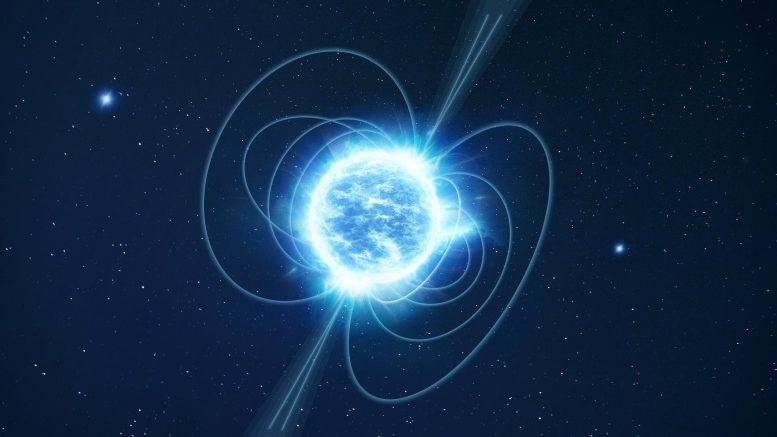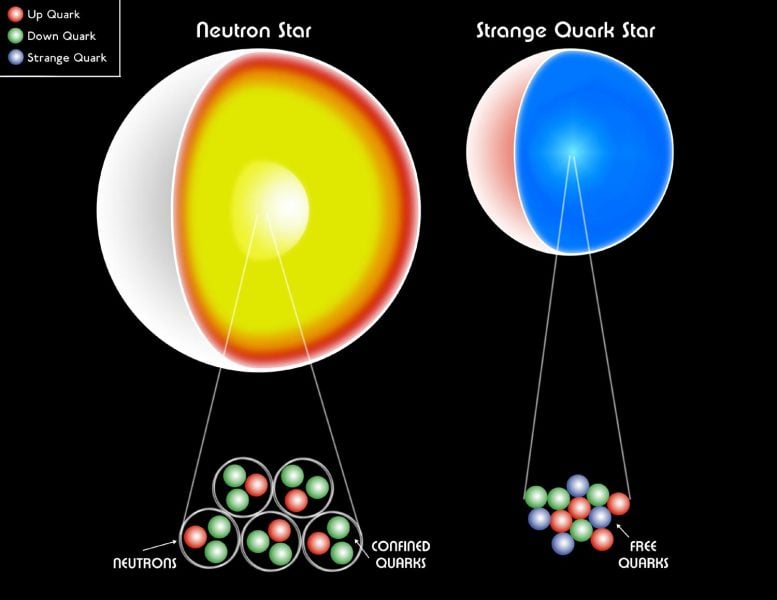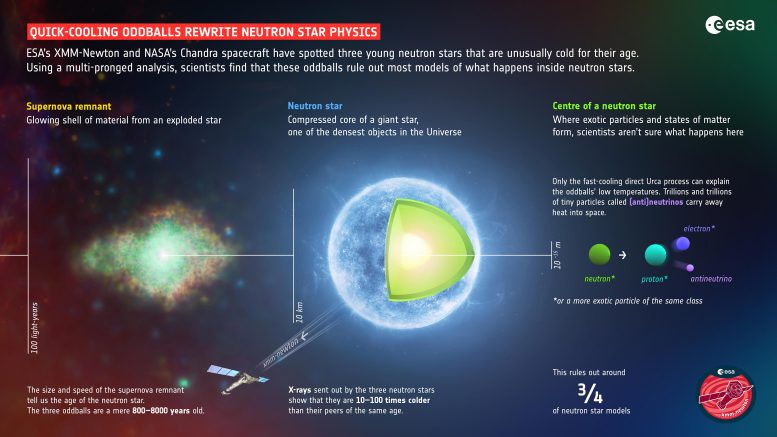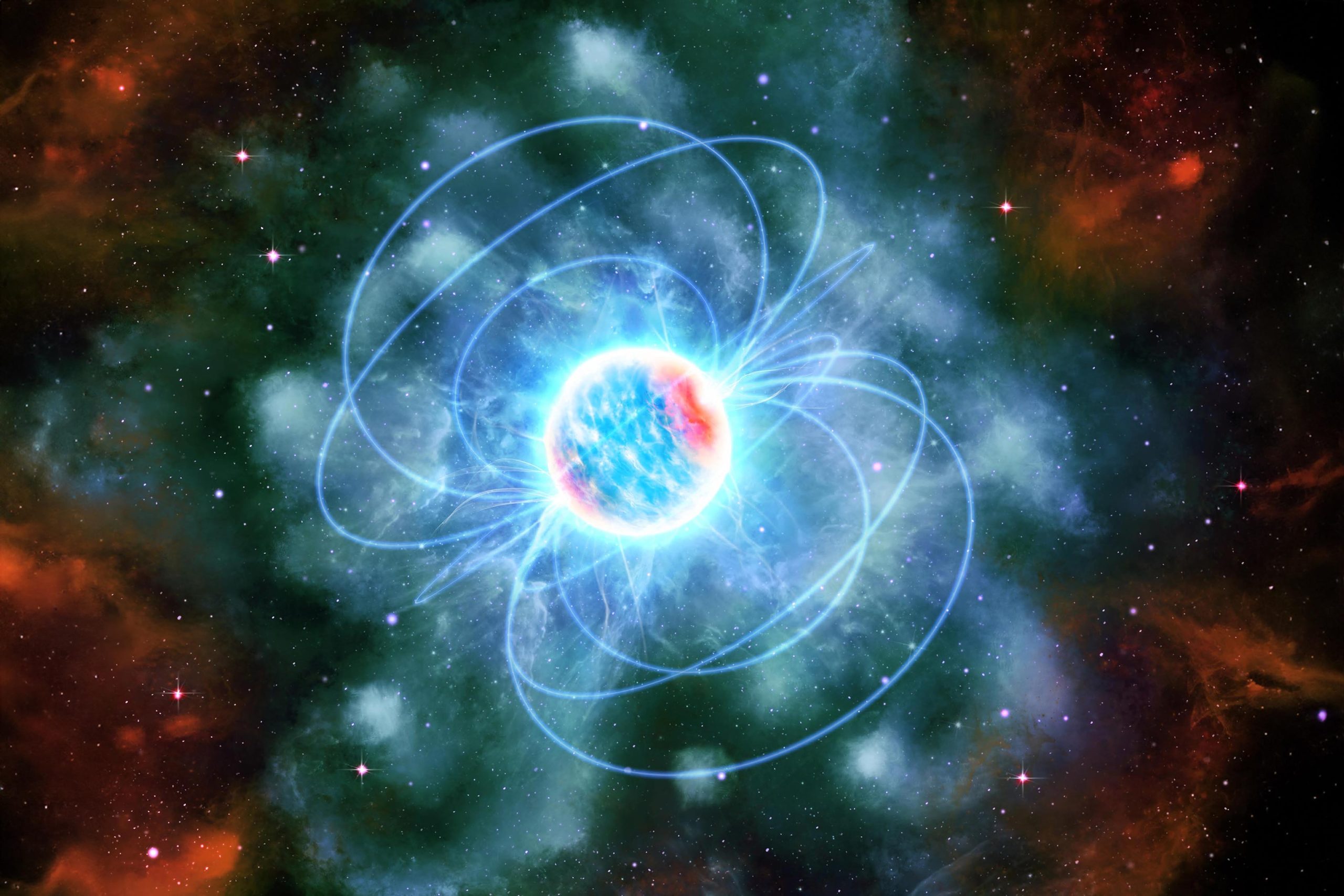Neutron stars are among the densest objects in the universe. The matter inside them is compressed so tightly that scientists don’t yet know what form it takes. The core of a neutron star may consist of a thick soup of quarks, or it may contain exotic particles that can’t exist anywhere else in the universe. Image credit: ICE-CSIC/D. Futselaar/Marino et al., edited
Latest observations from ESA's XMM-Newton telescope NASANASA's Chandra telescope has detected three unusually cool young neutron stars, challenging current models by showing that they are cooling much faster than expected.
This result has broad implications, suggesting that only a few of the many proposals neutron star These models are viable, and suggest a possible breakthrough in linking the theories of general relativity and quantum mechanics through astrophysical observations.
Unusually cool neutron stars discovered
The European Space Agency’s XMM-Newton and NASA’s Chandra have discovered three young neutron stars that are unusually cool for their ages. By comparing their properties with different models of neutron stars, the scientists concluded that the strange stars’ low temperatures rule out about 75 percent of the known models. This is a major step toward uncovering the single neutron star “equation of state” that governs them all, with important implications for the fundamental laws of the universe.

Along with black holes, neutron stars are some of the most puzzling objects in the universe. A neutron star is formed in the final moments of a very large star’s life (more than eight times the mass of our Sun), when the nuclear fuel in its core finally runs out. In a sudden and violent end, the outer layers of the star are ejected with tremendous energy in a supernova explosion, leaving behind a spectacular cloud of interstellar material rich in dust and heavy metals. At the center of the cloud (nebula), the star’s dense core collapses to form a neutron star. A black hole can also form when the remaining core mass is greater than about three solar masses. Copyright: European Space Agency
Extreme Density and Unknown States of Matter
After stellar-mass black holes, neutron stars are the densest objects in the universe. Each neutron star is the compacted core of a massive star, what remains after the star explodes in a supernova. After running out of fuel, the star's core collapses under the force of gravity while its outer layers are flung out into space.
The matter at the center of a neutron star is so compressed that scientists still don’t know what form it takes. Neutron stars get their name from the fact that under such immense pressure, even atoms collapse: electrons fuse with atomic nuclei, and protons turn into neutrons. But things could get even stranger, with the extreme heat and pressure perhaps cementing even more exotic particles that wouldn’t survive anywhere else, or perhaps the particles melt together in a swirling soup of their constituent quarks.

In a neutron star (left), the quarks that make up neutrons are trapped inside neutrons. In a quark star (right), the quarks are free, so they take up less space and the star's diameter is smaller. Image credit: NASA/XC Center/M. Weiss
What happens inside a neutron star is described by what’s called the “equation of state,” a theoretical model that describes the physical processes that can occur inside a neutron star. The problem is that scientists don’t yet know which of the hundreds of possible equation-of-state models is correct. While the behavior of individual neutron stars may depend on properties like their mass or how fast they’re spinning, all neutron stars should obey the same equation of state.
Neutron star cooling observations
By combing through data from the European Space Agency’s XMM-Newton and NASA’s Chandra, the scientists discovered three exceptionally young and cool neutron stars, 10 to 100 times cooler than their counterparts of the same age. By comparing their properties with the cooling rates predicted by various models, the researchers concluded that the existence of these three strange stars rules out most of the proposed equations of state.
“The young age and cold surface temperatures of these three neutron stars can only be explained by invoking a rapid cooling mechanism. Since enhanced cooling can only be triggered by certain equations of state, this allows us to rule out a large part of the possible models,” explains astrophysicist Nanda Rea, whose research group is based at the Institute of Space Sciences (ICE-CSIC) and the Institute of Space Studies of Catalonia (International Atomic Energy Commission) led the investigation.
Unifying theories through the study of neutron stars
The discovery of the true neutron star equation of state also has important implications for the fundamental laws of the universe. Physicists are not yet sure how to connect general relativity (which describes the effects of gravity on large scales) with quantum mechanics (which describes what happens at the level of particles). Neutron stars are the perfect testing ground for this because they have a density and gravity far beyond anything we can create on Earth.

Neutron stars are the compacted cores of massive stars, left over after a star explodes in a supernova. They are so dense that a sugar cube's worth of matter would weigh as much as the entire population of Earth! Image credit: European Space Agency
Uniting Efforts: Four Steps to Discovery
The three strange neutron stars are so cool that they are too faint for most X-ray observatories to see. “The extreme sensitivity of XMM-Newton and Chandra made it possible not only to detect these neutron stars, but also to collect enough light to determine their temperatures and other properties,” says Camille Diez, a research fellow at ESA who worked on the XMM-Newton data.
However, sensitive measurements were just the first step towards being able to draw conclusions about what these strange things mean for the equation of state of a neutron star. To this end, the NANDA research team at ICE-CSIC brought together the complementary expertise of Alessio Marino, Clara Dehmann and Konstantinos Kouvlaka.
Alessio was a pioneer in determining the physical properties of neutron stars. The team was able to infer the temperatures of neutron stars from the X-rays emitted from their surfaces, while the sizes and speeds of the supernova remnants surrounding them gave a precise indication of their ages.
Clara then took the lead in calculating “cooling curves” for neutron stars for equations of state involving different cooling mechanisms. This entails plotting what each model predicts for how a neutron star’s luminosity—a property directly related to its temperature—changes over time. The shape of these curves depends on many different properties of the neutron star, not all of which can be accurately determined from observations. For this reason, the team calculated cooling curves for a range of possible neutron star masses and magnetic field strengths.
Finally, a statistical analysis led by Konstantinos brought it all together. Machine learning To determine how well the simulated cooling curves match the properties of strange spheres, the study showed that equations of state without a rapid cooling mechanism have zero chance of matching the data.
Neutron star research crosses many scientific disciplines, from particle physics to Gravitational waves“The success of this work demonstrates how important teamwork is in advancing our understanding of the universe,” Nanda concludes.
Reference: “Constraints on the equation of state of dense matter from young and cool isolated neutron stars” by A. Marino, C. Dehmann, K. Kovelkas, N. Rea, J. A. Pons, D. Vigano, 20 June 2024, Natural astronomy.
DOI: 10.1038/s41550-024-02291-y

“Extreme travel lover. Bacon fanatic. Troublemaker. Introvert. Passionate music fanatic.”







More Stories
A fossilized creature may explain a puzzling drawing on a rock wall.
MrBeast Sued Over ‘Unsafe Environment’ on Upcoming Amazon Reality Show | US TV
Watch comets Lemmon and SWAN approach Earth today